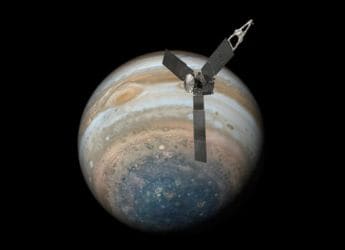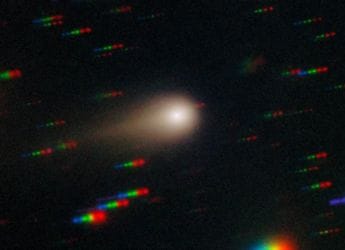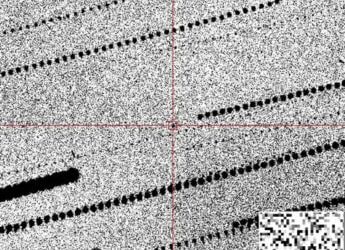- Home
- Science
- Science News
- Tiny Asteroid 2025 TF Zooms Past Earth Undetected, Closer Than Satellites
Tiny Asteroid 2025 TF Zooms Past Earth Undetected, Closer Than Satellites
Asteroid 2025 TF passed just 265 miles above Earth, unseen until hours later.

Photo Credit: ESA
Asteroid 2025 TF skimmed Earth at 265 miles above Antarctica, unseen until after passing.
A small asteroid, called 2025 TF, flew over Antarctica at an altitude of approximately 265 miles (428 km) lower than several satellites. It was initially observed hours after it had passed nearest to the astronomers, to their surprise. This last-second collision highlights that even small space rocks can fly through the radar without being detected in time. It also begs the question of the extent to which we can follow these tiny and fast objects.
Too Close for Comfort
According to ESA reports, the Asteroid 2025 TF (between 1 and 3 metres, that is, between a giraffe and a small car) passed the Earth around 8.47 p.m. EDT, and it was located at the same height as the International Space Station. Its flyby is the nearest flyby ever recorded by an object that did not make impact. The precedents of the cases were set in the past, including 2020 VT4, which was flying around the earth with a distance of approximately 230 miles. Small asteroids do not have any global threat that they can cause at these distances; however, they can cause a threat to satellites or might result in fireballs in case they collide with an atmosphere.
Why We Miss Them
Detecting meter-scale asteroids is extremely challenging. First, they are small and faint, making them visible only when sunlight reflects just right. Second, many approach from directions near the Sun's glare, where telescopes do not scan. Third, limited telescope coverage and real-time data analysis mean fast-moving objects can slip through.
As ESA noted, the 2025 TF was only confirmed after the fact using the Catalina Sky Survey and follow-up observations. While space agencies monitor thousands of larger near-Earth objects, current systems are less sensitive to these swift, tiny visitors.
For the latest tech news and reviews, follow Gadgets 360 on X, Facebook, WhatsApp, Threads and Google News. For the latest videos on gadgets and tech, subscribe to our YouTube channel. If you want to know everything about top influencers, follow our in-house Who'sThat360 on Instagram and YouTube.
Related Stories
- Samsung Galaxy Unpacked 2025
- ChatGPT
- Redmi Note 14 Pro+
- iPhone 16
- Apple Vision Pro
- Oneplus 12
- OnePlus Nord CE 3 Lite 5G
- iPhone 13
- Xiaomi 14 Pro
- Oppo Find N3
- Tecno Spark Go (2023)
- Realme V30
- Best Phones Under 25000
- Samsung Galaxy S24 Series
- Cryptocurrency
- iQoo 12
- Samsung Galaxy S24 Ultra
- Giottus
- Samsung Galaxy Z Flip 5
- Apple 'Scary Fast'
- Housefull 5
- GoPro Hero 12 Black Review
- Invincible Season 2
- JioGlass
- HD Ready TV
- Laptop Under 50000
- Smartwatch Under 10000
- Latest Mobile Phones
- Compare Phones
- HMD Touch 4G
- Vivo V60e
- Lava Bold N1 Lite
- Samsung Galaxy F07
- Realme 15x 5G
- OPPO A6 5G
- Samsung Galaxy M07
- Xiaomi 17
- Asus Vivobook S16 (S3607QA)
- Gigabyte AORUS Master 16
- Samsung Galaxy Tab A11+
- Xiaomi Pad 8
- Xiaomi Smart Band 10 Glimmer Edition
- Xiaomi Watch S4 41mm
- Xiaomi Xiaomi TV S Pro Mini LED 55 2026
- Xiaomi TV S Pro Mini LED 65 2026
- Asus ROG Ally
- Nintendo Switch Lite
- Haier 1.6 Ton 5 Star Inverter Split AC (HSU19G-MZAID5BN-INV)
- Haier 1.6 Ton 5 Star Inverter Split AC (HSU19G-MZAIM5BN-INV)

















